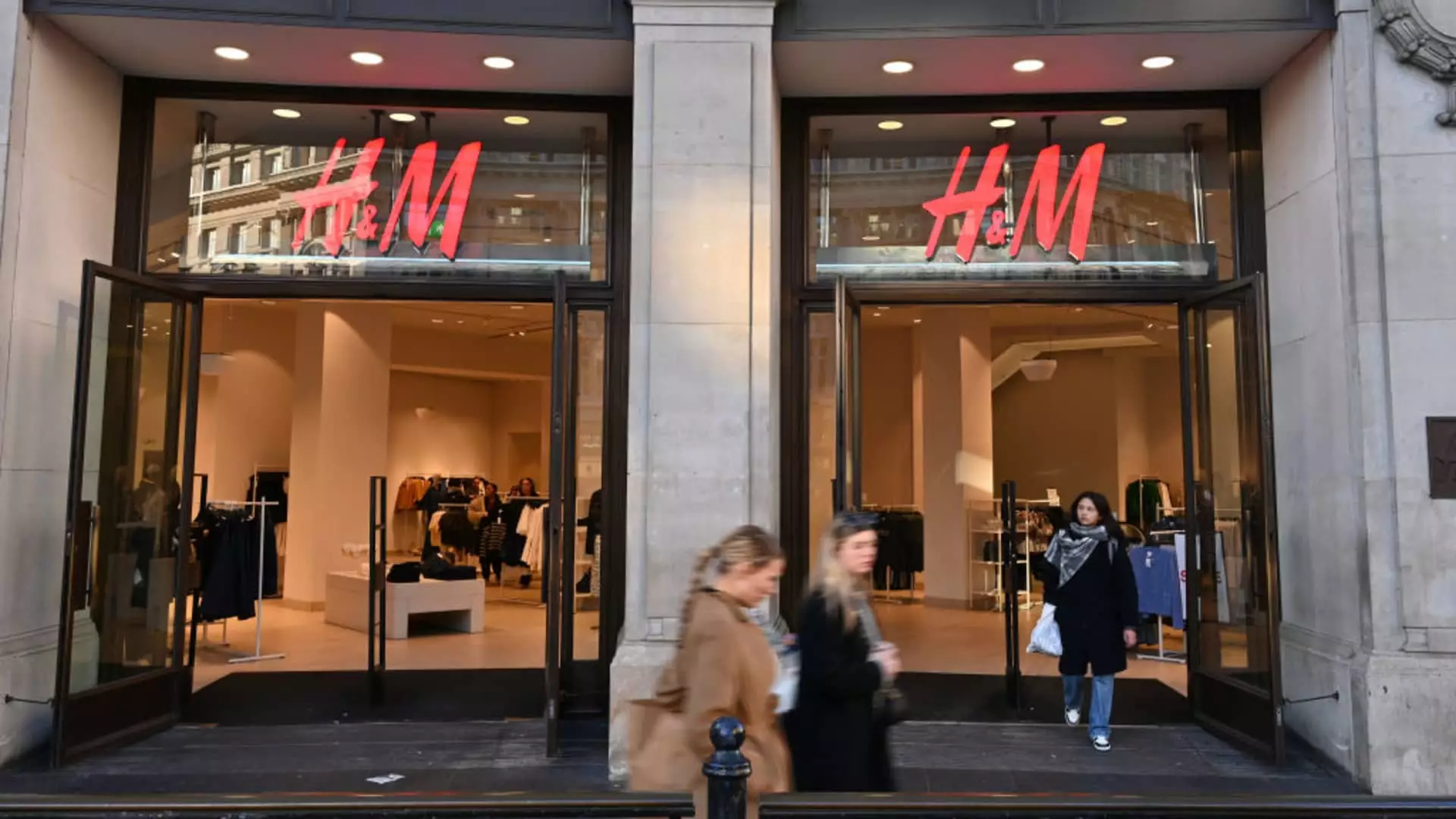H&M, the Swedish retail giant, has recently experienced a significant dip in its share price, falling over 5% following disappointing sales figures for the fourth quarter. With total sales recorded at 62.19 billion Swedish krona, the company fell short of analysts’ predictions, which estimated sales to reach around 63.48 billion Swedish krona. Despite this misstep, it is noteworthy that sales reflected a 3% increase in local currencies, suggesting some resilience in the brand’s core operations. However, the shortfall has sparked questions regarding H&M’s adaptability to changing market dynamics and its competitive edge in an increasingly challenging retail environment.
The primary explanations provided for the revenue miss included the timing of Black Friday, which affected consumer spending trajectories. Additionally, H&M has indicated a promising uptick in sales during December and January, suggesting that perhaps the dip was more of a seasonal anomaly than a prolonged downturn. Furthermore, on a macro scale, global retail markets have been navigating turbulent waters characterized by economic uncertainties and fluctuating consumer confidence. This environment underscores the urgency for H&M to solidify its market strategies and address any fundamental issues within its operations and supply chain management.
Despite the hiccup in fourth-quarter sales, H&M has showcased growth potential, particularly in segments such as womenswear, sportswear, and online retail. The company’s decision to enhance its digital presence and streamline operations may serve as a critical component in reversing declining sales trends. CEO Daniel Ervér highlighted that both sales and operating profit experienced growth in the fourth quarter, primarily due to effective online sales strategies and a strong reception for select women’s fashion lines. This focus on core strengths is part of a broader strategic approach aimed at fostering long-term, sustainable growth.
Moreover, H&M’s full-year operating profit surpassed expectations, landing at 17.3 billion Swedish krona, which slightly exceeded the forecast of 17.2 billion. This positive development, combined with the reported operating profit of 4.6 billion Swedish krona in the last quarter, hints that while sales fell short in certain areas, the company’s overall financial health remains intact.
As H&M looks to the future, CEO Ervér anticipates some relief for consumers in 2025, advocating that the company stands ready to tackle adverse external factors affecting international trade. His confidence seems to be rooted in the expectation of decreasing inflation and interest rates, which may positively influence consumer sentiment as economic conditions stabilize. Despite ongoing challenges, Ervér maintains that H&M’s diversified supply chain provides a crucial buffer against market volatility, allowing for nimbleness in adjusting to shifting consumer demands.
Setting ambitious targets for future growth, H&M aims for an annual sales increase of at least 10%, while also striving for an operating margin exceeding 10%. Furthermore, the company aims to cut greenhouse gas emissions by 56% by 2030 compared to 2019 levels. Such commitments align with a growing consumer expectation for corporate responsibility and sustainability in fashion.
Despite the optimistic outlook from H&M’s leadership, the company must confront increasing competition, particularly from Inditex-owned Zara and fast-fashion competitor Shein. The latter, known for its ultra-low pricing and rapid turnover of styles, poses a considerable threat to H&M’s market share. Earlier this year, H&M retracted its earnings margin target in light of increasing operational costs and competition, a decision that illustrates the urgency with which the company must navigate its path forward.
This period of transition reflects an opportunity for H&M to innovate and differentiate itself. By focusing on high-quality products alongside competitive pricing, the brand can enhance its appeal to value-conscious consumers while also upholding its commitment to sustainability. Embracing a multi-faceted strategy that prioritizes both market relevance and environmental stewardship will be paramount as H&M continues to iterate on its business model in the rapidly evolving fashion landscape.
Ultimately, while H&M currently faces several obstacles, a proactive approach in addressing these challenges could pave the way for a revitalized market presence and sustained growth in the years ahead.

